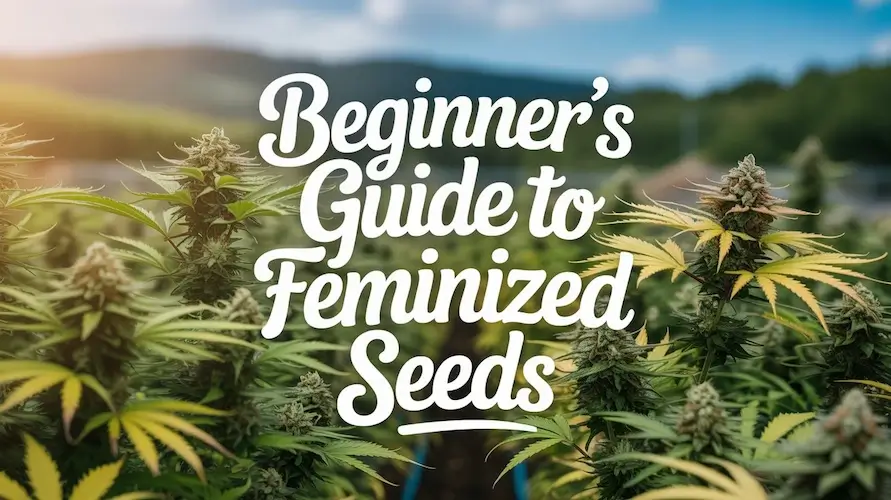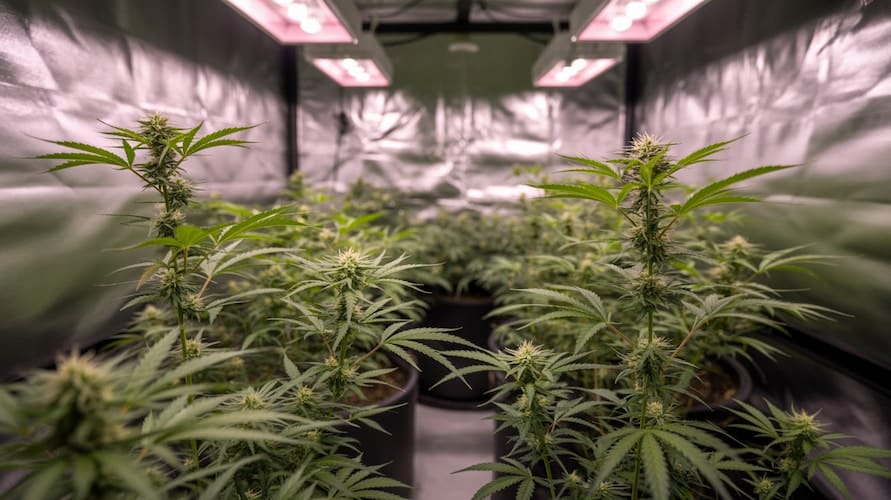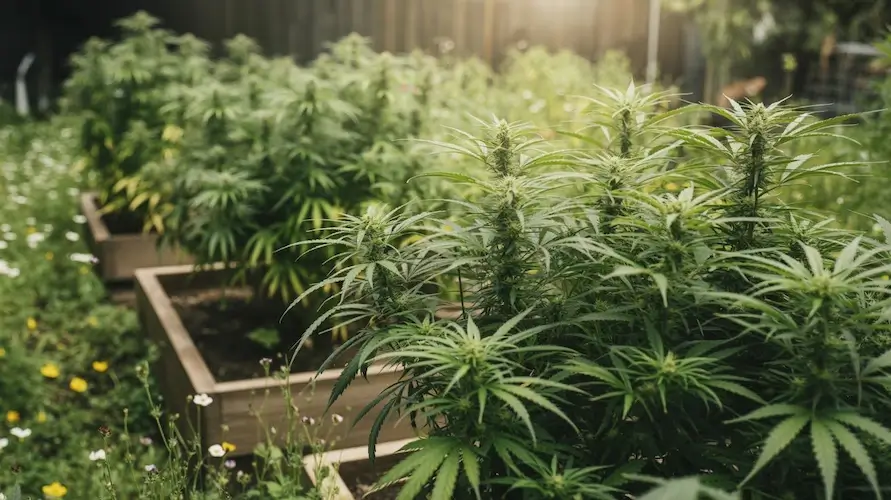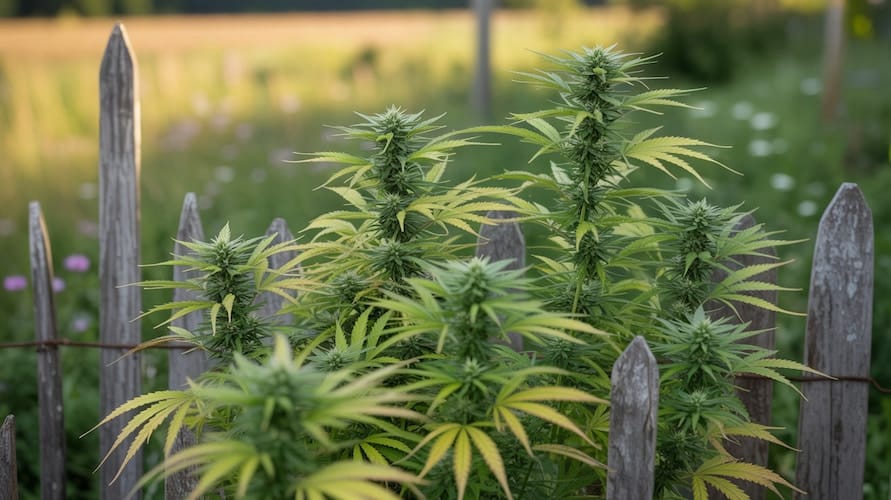Beginner’s Guide to Feminized Seeds

Why Feminized Seeds Are a Beginner’s Best Friend
If you’re just getting started in cannabis cultivation, few choices impact your results as much as the type of seed you plant. Feminized seeds are bred to produce female plants nearly every time, which matters because female plants grow resinous buds, and male plants produce pollen, not smokable flowers. By starting with feminized seeds, beginners reduce guesswork, save space, and streamline the path from germination to harvest.
This guide explains what feminized seeds are, how they’re made, the pros and cons, how to select the right strain, and how to grow them successfully. You’ll also learn about common pitfalls, storage best practices, and answers to frequently asked questions.
What Are Feminized Seeds?
In nature, cannabis seeds can grow into either male or female plants. Regular seeds usually produce about a 50–50 split. Feminized seeds are bred to produce female plants with extremely high reliability, allowing growers to maximize bud production without culling males later.
Feminization does not change the plant into a different species or make it inherently weaker. Instead, feminized seeds are the result of selective breeding and pollination techniques that ensure female genetics are passed along to the progeny.
How Feminized Seeds Are Made (Plain-English Version)
Seed makers create feminized seeds by inducing a stable female plant to produce pollen, then using that pollen to pollinate another female. Because both parents are genetically female, the resulting seeds overwhelmingly express female traits.
Breeders typically accomplish this by applying a silver-based solution—most commonly silver thiosulfate (STS)—to select branches during early flowering. The treated female produces pollen sacs. That pollen is collected and used to pollinate a compatible female plant. Done correctly, the resulting seed stock is genetically XX, which means a very high likelihood of female offspring.
Reputable breeders stress-test parent plants, use stable lines, and avoid passing along traits that could increase the chance of hermaphroditism. For growers, that breeder expertise is gold: it means you can count on consistent, vigorous plants from seed to harvest.
Pros and Cons of Feminized Seeds
Advantages
-
No male culling: Save time, space, nutrients, and energy by avoiding non-flowering male plants.
-
Predictable canopies: Plan pot counts, lighting footprints, and training with confidence.
-
Beginner-friendly: Simplifies the learning curve so you can focus on environment, nutrition, and training.
-
Efficient use of indoor space: Every square foot contributes to bud production.
-
Cloning consistency: Once you find a winner, you can clone it and preserve the phenotype.
Considerations
-
Hermaphrodite risk if stressed: Any cannabis plant can throw a few “nanners” under severe stress (light leaks, extreme heat, nutrient swings). Starting with reputable breeders, maintaining stable conditions, and regularly inspecting helps prevent issues.
-
Less genetic surprise: If you enjoy hunting unique males for breeding projects, you’ll need regular seeds.
-
Upfront cost: Feminized seeds can be slightly more expensive than regular, but the efficiency often offsets the difference.
Feminized vs. Autoflower vs. Regular Seeds
Feminized (photoperiod) seeds produce female plants that flower based on the light schedule—typically 12 hours of light and 12 hours of darkness.
Autoflower seeds switch to flowering based on age, not light cycles, and are often available as feminized autos (best of both worlds for speed and simplicity).
Regular seeds produce male and female plants; they’re great for breeding projects and old-school selection, but require more management.
Which should you pick as a beginner?
-
If you want full control of veg time, plant size, and training, start with feminized photoperiod seeds.
-
If you prefer a faster, simpler timeline and don’t want to manage light schedules, feminized autoflowers are a strong option.
-
If you’re curious about breeding or you enjoy pheno hunting with male/female selection, graduate later to regular seeds.
How To Choose the Right Feminized Strain
-
Growing environment:
-
Indoor: Choose strains known for compact structure and good response to training.
-
Outdoor: Look for mold-resistant, climate-tolerant cultivars and appropriate flowering times for your latitude.
-
-
Flowering time and vigor:
-
Faster-flowering strains (8–9 weeks) shorten your total cycle.
-
Vigorous hybrids are forgiving for beginners and respond well to topping, low-stress training, and SCROG.
-
-
Effect, aroma, and flavor goals:
-
Decide whether you want uplifting, relaxing, or balanced effects.
-
Terpene profiles—citrus, gas, fruit, earth, floral—guide your sensory preferences.
-
-
Difficulty rating:
-
New growers benefit from hardy, resistant strains that tolerate small mistakes.
-
Check breeder notes for feeding preferences, stretch behavior, and yield potential.
-
-
Source and reputation:
-
Buy from trusted seed banks and respected breeders with consistent, well-documented lines.
-
Pro tip: If you’re unsure, start with two or three feminized strains known for stability and beginner friendliness. Keep notes, compare growth, and pick your favorite for the next run.
Germination: Start Strong
A smooth start sets up a smooth finish. Three reliable germination methods are:
-
Starter cubes or plugs: Pre-made, pH-balanced cubes keep moisture consistent and roots happy.
-
Moistened paper towel in a baggie: Keep warm (around 75–80°F) and inspect daily. Transfer gently once the taproot is visible.
-
Direct sow into a light seed-starting mix: Moisten, not soak. Plant about ¼–½ inch deep, and avoid heavy watering.
Key germination tips:
-
Use clean, room-temperature water.
-
Keep the environment warm, humid, and stable.
-
Avoid handling the delicate taproot.
-
Provide gentle light as soon as cotyledons open.
Veg Stage: Build the Foundation
During vegetative growth, focus on roots, structure, and health.
-
Lighting: For photoperiod feminized seeds, keep 18 hours on / 6 off or 20/4. Maintain proper distance from LED fixtures to avoid light stress.
-
Temperature and humidity: Aim for 72–80°F with 55–70% RH during early veg, lowering RH gradually as plants mature.
-
Nutrition: Start light, then ramp up. Seedlings prefer mild feed. Many beginners succeed with premixed, cannabis-friendly nutrients.
-
Training: Top once the plant has 4–6 nodes, or try low-stress training (LST) to open the canopy. Feminized plants typically take well to topping, LST, and SCROG.
-
Transplanting: Upsize containers as roots fill the pot. Each transplant should coincide with visible root development, not a rigid timetable.
Flip to Flower: Timing Is Everything
Feminized photoperiod plants flower when you switch to 12/12 (12 hours light, 12 hours dark). Consider:
-
Pre-flower stretch: Many strains double in height. Plan canopy space, stakes, or trellis support.
-
Defoliation: Remove large leaves blocking bud sites, but avoid over-stripping. Take a little, wait a few days, then reassess.
-
Humidity control: Lower RH to 45–55% to discourage mold as the flowers stack density.
-
Nutrient shift: Transition to bloom-focused feeding with adequate phosphorus and potassium, while avoiding overfeeding.
Light discipline matters: Light leaks can confuse photoperiod plants and increase the risk of hermaphroditism. Ensure total darkness during the 12-hour night.
Indoor vs. Outdoor With Feminized Seeds
Indoors
-
Pros: Full control of environment, year-round harvests, stealth.
-
Cons: Equipment costs, power usage, and the need for attentive monitoring.
Outdoors
-
Pros: Sun-grown terpenes, lower costs, big yields in the right climate.
-
Cons: Weather risks, pests, and seasonal timing. Choose strains that finish before your first frost, and consider mold-resistant genetics if humidity is high.
Common Mistakes To Avoid
-
Overwatering seedlings: Roots need oxygen. Let the medium dry slightly between waterings.
-
Chasing high EC: More nutrients do not equal faster growth. Follow a measured feed schedule, and watch the leaves for feedback.
-
Ignoring pH: Keep nutrient solution in the appropriate range for your medium.
-
Light leaks in flowering: Even small leaks can stress plants.
-
Late training in bloom: Heavy bending or topping after the first week of flower can slow production.
Pest and Disease Basics
-
Prevention first: Keep the grow clean, quarantine new plants, and avoid bringing outdoor plants or garden clothes into the tent.
-
Scouting: Inspect under leaves for mites, thrips, and eggs. Sticky traps help you monitor flying pests.
-
Environment as a tool: VPD-appropriate humidity, strong airflow, and consistent temperatures reduce disease pressure.
Harvest, Dry, and Cure
-
When to harvest: Use a combination of visual cues—swollen calyxes, receded pistils—and a trichome check with a loupe.
-
Drying: Hang branches or use racks in a dark, ~60°F, 55–60% RH room with gentle airflow for 7–14 days.
-
Curing: Jar the buds, burp daily at first, then less frequently. Proper curing improves smoothness, aroma, and shelf life.
Storing Feminized Seeds for the Long Haul
Seeds are living embryos. Treated right, they remain viable for years.
-
Cool, dark, dry: Aim for 40–45% RH and a temperature in the upper 40s to low 50s°F.
-
Airtight containers: Use glass vials or mylar bags with desiccant packs.
-
Minimal light and handling: Label the strain, breeder, and date.
-
Avoid freeze–thaw cycles: If you refrigerate, keep seeds sealed and let them warm to room temperature before opening to prevent condensation.
Budgeting and Yield Expectations
Feminized seeds help you maximize return per square foot because you’re not feeding or lighting male plants. Your final yield depends on strain genetics, veg time, light intensity, training, and environment. Beginners often see significant improvements in the second run as they dial in watering, pH, and canopy management.
Ethical, Legal, and Safety Notes
Cannabis laws vary widely by location. Before you germinate a seed, verify local regulations on possession, cultivation, and plant counts. Keep your grow safe by managing electrical loads properly, maintaining clean ventilation, and minimizing fire risks with tidy wiring, secure fixtures, and quality timers.
Quick Start Checklist
-
Choose reputable feminized seeds suited to your space and climate.
-
Germinate in a clean, warm, moderately humid environment.
-
Run 18/6 lighting in veg; switch to 12/12 to flower photoperiod strains.
-
Keep pH and EC in range; avoid overwatering.
-
Maintain dark nights during bloom, and lower RH as buds thicken.
-
Harvest when trichomes are ready, then dry slowly and cure patiently.
-
Store extra seeds cool, dark, and dry.
Beginner-Friendly Training With Feminized Seeds
Feminized plants respond well to common training techniques:
-
Topping: Encourages multiple main colas and a flatter canopy.
-
LST (low-stress training): Gently bends branches outward for better light penetration.
-
SCROG (screen of green): Uses a net to spread growth evenly, maximizing light use.
Introduce training in late veg when stems are pliable, and avoid high-stress techniques once flowers set.
Troubleshooting At a Glance
-
Yellowing lower leaves in veg: Possible nitrogen deficiency, or overwatering inhibiting nutrient uptake.
-
Canoeing leaves or burnt tips: Light intensity or EC is too high. Raise lights, dial back feed, or both.
-
Droopy plants: Usually a watering issue—either too much or too little. Check pot weight and root health.
-
Spots or stippling under leaves: Scout for mites or thrips; respond early with integrated pest management.
The Bottom Line
For new growers, feminized seeds offer a streamlined, confidence-building path to healthy, bud-filled plants. You’ll spend less time culling males, more time dialing in your environment, and you’ll learn faster because each plant in the tent contributes to the final harvest.
When you’re ready to start, choose strains suited to your space, follow a consistent routine, and keep notes. Small improvements each week add up. With feminized seeds, your learning curve is shorter, your canopy is more predictable, and your harvest goal is easier to hit.
Where To Buy Feminized Seeds
Looking for trusted genetics and helpful customer support? Seeds Here Now carries a wide selection of feminized seeds from top breeders, with strain descriptions, grower notes, and verified reviews to help you choose confidently. Explore the catalog, compare options, and pick the feminized seeds that match your goals and environment.
Frequently Asked Questions
Are feminized seeds genetically modified?
No. Feminized seeds are produced through selective breeding and controlled pollination between female plants. There is no genetic modification in the GMO sense.
Will feminized seeds always produce female plants?
Nothing in biology is 100 percent, but quality feminized seeds from reputable breeders are highly likely to produce female plants. Stress can influence sex expression, so stable conditions matter.
Can feminized plants herm?
Yes, any cannabis plant can form male flowers when severely stressed. Prevent this with stable light cycles, a proper environment, and gentle training.
Do feminized seeds yield less than regular seeds?
Not inherently. Yield depends on genetics, veg time, training, light intensity, nutrition, and environment—not whether the seed was feminized.
Should beginners choose photoperiod autoflower feminized seeds?
If you want full control over plant size and training, choose photoperiod feminized. If you prefer a faster, simpler timeline, try a feminized autoflower.
Can I clone from a feminized seed plant?
Absolutely. Many growers find standout phenotypes from feminized seeds and keep them as mother plants for cloning.
How many feminized seeds should I plant in a 2-by-4 tent?
Growing two to four medium plants is common. It depends on pot size, veg time, training style, and your light’s coverage.
Do I need different nutrients for feminized seeds?
No. Use a balanced program appropriate for the plant’s stage and your growing medium. Start light, watch the leaves, and adjust.
Suggested Articles
;)
;)
;)







 11 Sep 2025
11 Sep 2025  23 min read
23 min read


 April 11, 2024
April 11, 2024 


RESPONSES (0)
No responses yet. Be the first to respond!